'Thank you for saving my life'
NATCA honors controllers who made a difference
Some had a split second to size up the situation and figure out how to help.
Other stories of air traffic controllers rising to challenges unfolded over agonizing minutes, their work focused on preserving the lives of people in distant airplanes, the nameless voices of pilots—and in one case, a nonpilot with no aviation experience—cracking through the radio, counting on a calm voice to help them figure out what to do next.
Illinois pilot Chris Stradling, one of two pilots who had been involved in the various incidents behind the awards who showed up to speak at the event, expressed heartfelt gratitude in person: “Thank you for saving my life,” he said, addressing Indianapolis Center controller JJ Lytton, on stage before the crowd of NATCA members and guests in the Las Vegas hall.
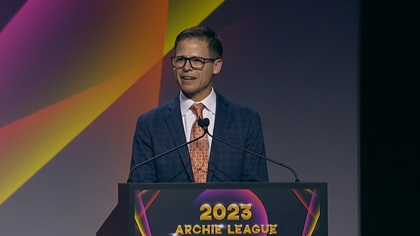
Stradling also offered thanks on behalf of his wife and five children, ages 13 to 22 years old, each of them, he said, “thankful to have a husband and father standing before you today.”
Stradling was flying his Cirrus SR22T alone from Chicago to Kissimmee, Florida, on January 9, and had climbed to 25,000 feet, confident that his new oxygen gear would work well. Flying a nonpressurized aircraft at an altitude where useful consciousness may be measured in seconds in the absence of supplemental oxygen, Stradling was using, for the first time at high altitude, an oxygen system designed to conserve and concentrate the life-sustaining gas. The mask requires a tight seal against the face to function properly, Stradling explained, and he had been taking it off briefly to speak clearly on the radio during the flight. After one such call, he replaced the mask without achieving the required seal. “I had no idea.”
Stradling said he recalls little of the height of his hypoxia: “I don’t even recognize my own voice in that,” he said about the recording of the conversation he had with Lytton, which was played during the presentation.
Lytton suspected something was wrong when Stradling missed a frequency change, according to an account of the event posted on the NATCA website, and also covered in a rivteting video presentation of radar tracks and radio calls. When Lytton contacted Stradling again, he noticed something was different about the pilot's voice, and Lytton alerted his supervisor about the suspected hypoxia incident.
ATC is teamwork, and many controllers responded to assist, managing other traffic, coordinating a response, looking up information that might help. Lytton advised Stradling to don his oxygen mask, repeating the word “oxygen” to drive the point home to a struggling brain. Lytton instructed Stradling to descend to 11,000 feet. It took time for Stradling to comply. He was having trouble making his arms and legs move in response to his oxygen-starved brain's instructions, the pilot recalled.
Sean Edlund, another controller and a pilot, suggested asking the stricken pilot to verify the oxygen was actually flowing. Stradling said during the ceremony that while he was able to dial the lower altitude into the autopilot, “I just couldn’t mentally get myself to push the down button,” and he has “no memory of activating the descent.”
Lytton was persistent, as was Stradling, overcoming the effects enough to activate the descent, and the Cirrus eventually began to head down into thicker air. At 16,000 feet, Stradling began to recover, and resumed speaking intelligble words. He soon recovered fully and opted to continue the flight to his intended destination, where he landed safely.
Lytton acknowledged the roles played by many of his colleagues when accepting the award: “There was a lot more going on than just me talking to him.”
Turning to Stradling on the stage, he said, “Thank you for making it. I still can’t believe that you continued on down [to Florida].”
Lytton related to fellow controllers his own lesson learned: Sometimes a pilot recovering from a brush with death in a perfectly functional aircraft can use a little time to collect thoughts and regain some calm before attempting to land.

‘My pilot has gone incoherent’
Darren Harrison told NBC’s Today show in May 2022 that being on an airplane when the pilot suddenly becomes incapacitated was a “nightmare” scenario he had imagined before it actually happened on May 10. Harrison was a passenger in a Cessna Caravan returning to Florida from a fishing trip in the Bahamas when the pilot complained of feeling unwell, and then became unresponsive. The Lakeland, Florida, resident, 39 at the time, had to figure out on his own how to pull the aircraft out of a dive that ensued when the passengers worked to lift the unresponsive pilot out of the front seat.
Harrison, relying on what he learned about flying from movies and television, managed to get the aircraft level, and then figured out how to work the radio. Tower controller Chip Flores at Treasure Coast International Airport in Fort Pierce, Florida, took the initial call for help: “My pilot has gone incoherent. I have no idea how to fly the airplane, but I'm maintaining 9,100 feet.”
Flores worked to locate the aircraft, but Harrison was unable to be more specific than reporting that they were approaching the Florida coast. The flight was soon identified on radar about 20 miles east of Boca Raton Airport, over the Atlantic Ocean, and that’s when certificated flight instructor and Palm Beach International Airport controller Robert Morgan got involved.
Guiding an ab initio pilot safely to the ground in a single-engine turboprop was made more challenging by radio coverage, and the desire to avoid guiding Harrison through a frequency change that could break their only line of communication. The controllers turned to an emergency option—a portable emergency transceiver that could tune to the required frequency as Morgan guided the flight to Palm Beach International Airport, where long runways and robust emergency services were available.
Many controllers took part in the overall response, clearing airspace for the Caravan by putting other aircraft in holds. Morgan guided Harrison step by step to a long, stable, straight-in approach, talking him through turns, flap settings, and finally, how to hold the nosewheel off the pavement and let the mains touch down first.
Morgan, accepting the honor, said he had walked into the radar room with trepidation, feeling nerves and fearing failure, the loss of life that could have resulted.
“I was successful that day at my job because my facility worked together as a team,” Morgan said, adding, with a smile, that one regrettable consequence of using that portable emergency transceiver is that it was not capable of recording the conversation. “This would have been the only tape talk I ever would have wanted to hear.”
NATCA Southern Regional Vice President Jim Marinitti supplied the perfect epilogue to the episode: The pilot has fully recovered from the medical incident.

‘My job was the furthest thing from my mind’
Joseph “WW” Howard was on duty at the tracon in Anchorage, Alaska, October 26, when a Tecnam P2012 Traveller departed for Homer, Alaska. About 15 miles out at 6,000 feet, the transponder signal dropped, and efforts to reach the flight on the radio drew no reply.
Howard, making multiple attempts at radio contact, noticed the aircraft was off course, and had turned toward rising terrain. He asked another flight to attempt radio contact, without success. Howard continued to broadcast in the blind, advising the flight to turn away from terrain ahead. He tried to discern if he was being heard (he wasn't), and how else he could help. Finally, the flight came back on frequency, reporting a complete avionics failure. Weather was deteriorating, and Howard reached back to the procedures of yesteryear to offer no-gyro vectors to approach the airport and work down to 1,600 feet, "the lowest I can get you," his voice rang through the hall as NATCA played the radio recording for the assembled audience months later.
Howard, accepting his Archie League Medal of Safety, said he has a different take than many controllers who will tell you they were “just doing their job” that day.
“My job was the furthest thing from my mind,” Howard said. “When I realized the severity of the situation, my immediate and persistent thoughts were only to an overwhelming sense of empathy for that individual trapped in that awful place. It wasn't the rules, the regulations, nor procedures that dictated my actions. It was only concern for my fellow pilot…I understood exactly how much information he was missing, how desperate his situation truly was, and how it might feel to be sitting in his seat.”
After 28 long minutes, the flight returned to Anchorage and landed safely.
“I see about a dozen things that I could have done better,” Howard said, in closing. “It is with humility that I stand before a crowd that are always striving to do better.”

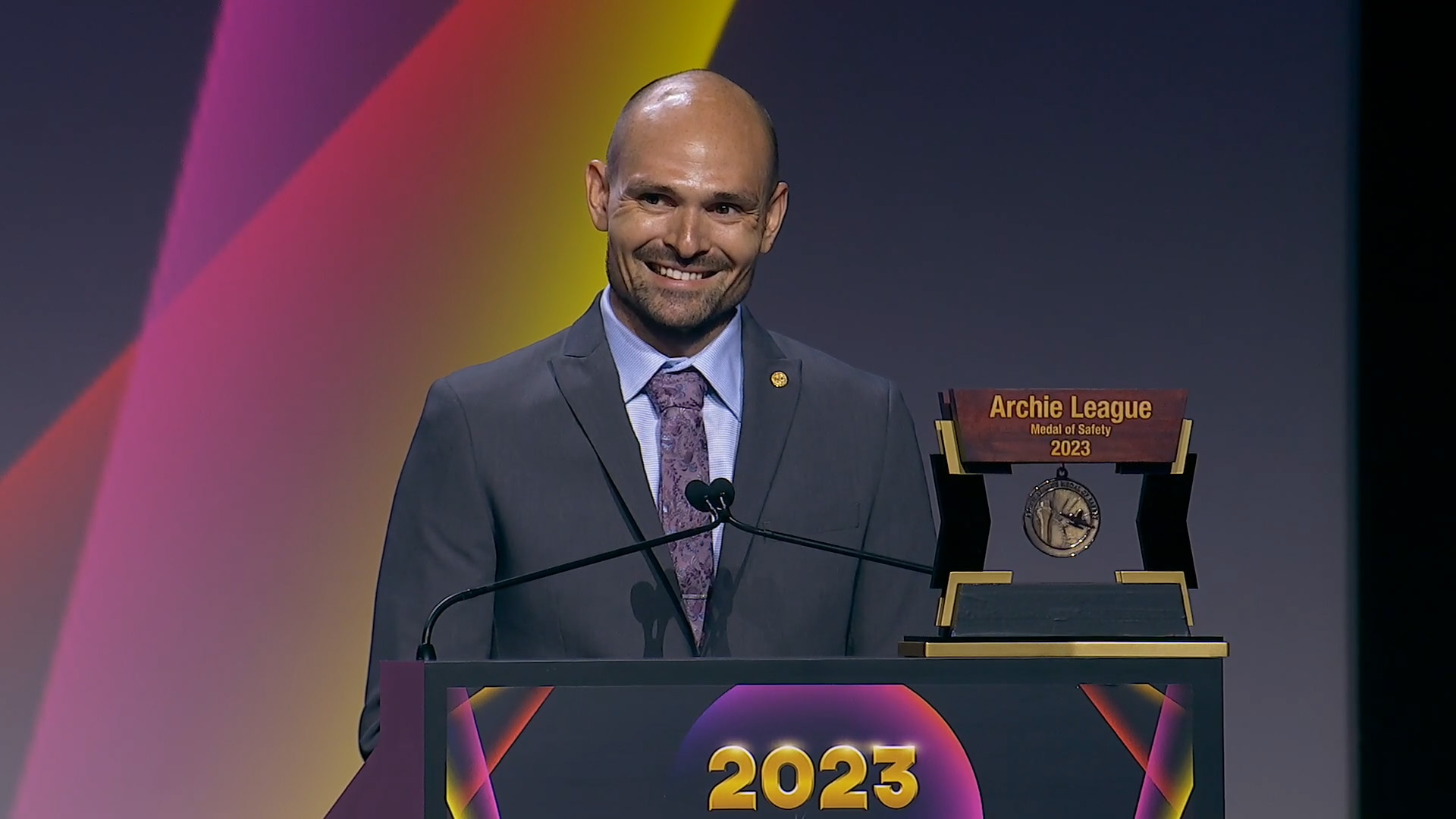

‘You’re going to be all right’
On February 4, a student pilot in a Cessna 172 called Oakland Center to report that he “can’t see,” the first words controller Max Miggo, working with trainee Benjamin K. Yuen, heard from N2031Y, which had encountered unexpected instrument conditions en route to Lincoln Regional Airport/Karl Harder Field in California. Miggo spoke calmly, working to identify the aircraft on his scope, and began to plan an escape.
Miggo’s colleagues, including Yuen by his side, worked together to guide the pilot toward visual conditions, contacting other flights for pireps to learn where the cloud tops were, and working to keep the student calm and focused on his instruments.
Miggo’s voice, replayed in the auditorium and over the event livestream, was calm, clear, reassuring. He asked the pilot how he was doing.
“I’m just watching my instruments, listening to you, Three-One Yankee.”
“You’re doing great. You’re above all the terrain. Everything’s good,” Miggo replied. “Keep the climb going. You’re going to be all right.“
Yuen, accepting his award, recalled that he “could hear the fear in the pilot’s voice. Honestly, that triggered a massive fear response in me as well. Max stayed calm.’
Miggo continued to work with the pilot as the Skyhawk reached broken clouds, and finally glimpses of ground and a hole in the cloud deck that made it possible to circle down below the bases. Miggo had been guiding the flight toward Oroville Municipal Airport, the closest and best option for landing based on the weather. As the Skyhawk descended, Miggo lost radio contact, and enlisted another nearby aircraft to relay messages, including the final transmission, the recording of which, months later in a Las Vegas convention hall filled with aviation safety professionals, provoked a wave of applause: The Cessna was safely on the ground at Oroville.

‘Our training prepares us to take action’
The routine of June 21, 2022, in the tracon at Kansas City International Airport was disrupted by an alert from Kansas City Center: An experimental aircraft had called “Mayday” with “an engine about to fail.”
Departure controller Tyler Wilke contacted the flight on 121.5 MHz, but radio communication was challenging. Wilke attempted to get the pilot to change frequencies, but the pilot was unable or unwilling, so Wilke presented nearest airport options.
Controller in charge Matt Williams began reallocating Wilke’s workload, shifting other traffic in Wilke’s sector to other controllers. The stricken aircraft reported worsening engine condition, and a thus-far fruitless search for an open field large enough to land in. Controllers contacted other VFR aircraft for help spotting the stricken airplane in case it was forced to land. In the tower cab at Kansas City International, John “Casey” Hovis, a pilot, called in to advise the flight was near Interstate 35, and could follow that to Cameron Airport.
The flight’s safe landing was reported by one of the other aircraft enlisted to relay communications and serve as the eyes of the controllers.
“Our training prepares us to take action,” said NATCA Central Region Vice President Aaron Merrick, presenting the awards to Wilke, Williams, and Daniel Clifton, a controller in the Kansas City International tower that day.
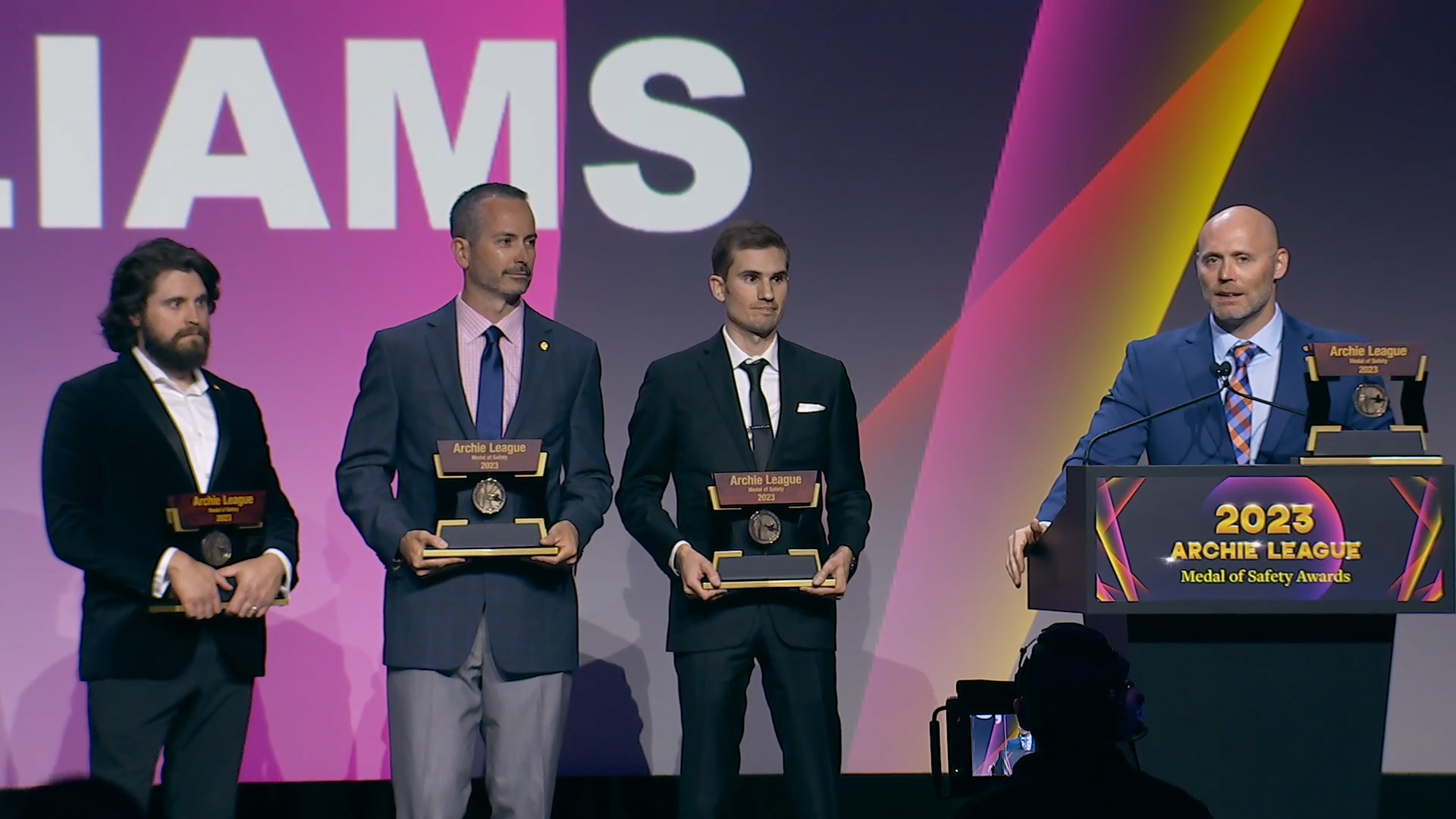
‘My career high, hopefully not to be repeated’
Veteran Aer Lingus pilot Aine Wolfe managed to fly for 34 years before losing an engine on takeoff. The captain of an Airbus A330 forced to make an immediate return and emergency landing thanked the controllers who assisted in a successful outcome, having accepted NATCA's invitation to speak at the ceremony and personally thank Archie League Medal of Safety recipients Charles “Chuck” J. Lumia Jr. and Jeremy R. Wilson, who were working the tower and tracon that day at Bradley International Airport in Connecticut.
The first sign of trouble was reported by another aircraft on the ground that witnessed the fireball coming from Shamrock 13J's right engine as it lifted off. On the flight deck, Wolfe had become aware of a problem—excessive vibration in the right engine—during the takeoff roll, but reached V1 almost at the same instant the anomaly was noted. "We were committed," she recalled. An explosive bang was heard during rotation, and "All the years of training helped as we climbed out... we were busy, but also we were incredibly lucky that day."
Lumia, then working in the tower, handling ground and local traffic, had just worked with Wilson, the tracon controller that day, to coordinate Shamrock 13J's counterflow departure from Runway 6 with a right turn to 190 after takeoff. When the pilot of another aircraft on the ground reported the apparent engine problem, Lumia relayed that information to Wolfe, who was still in the climbing turn to her assigned heading and working with her crew to assess the situation.
“All this information helped me tremendously to make that decision: I need to get back on the ground very quickly,” Wolfe recalled during the ceremony. That day, she keyed the mic and declared a “Pan-Pan” after confirming a compressor stall in the right engine, requesting an immediate return to the airport. Lumia coordinated that return plan with Wilson, and canceled the approach clearance of an inbound United Airlines flight approaching Runway 24. Wolfe requested vectors, and Lumia handed her off to Wilson, who took over guiding the heavy jet through a somewhat elongated traffic pattern.
“Chuck and Jeremy, it’s like you've been sitting with me in a simulator for the last 34 years,” Wolfe told the two controllers. “Your calls were clear, accurate, precise.”
Wolfe said the incident has since been reviewed by the company, and “they called it textbook.”
The aircraft landed safely, emergency vehicles positioned and ready, but not needed as the jumbo jet touched down.
"This incident has been my career high, hopefully not to be repeated," Wolfe said. She thanked the controllers in Gaelic, and then in English: “A thousand thank-you’s for getting us safely and swiftly back on the ground.“
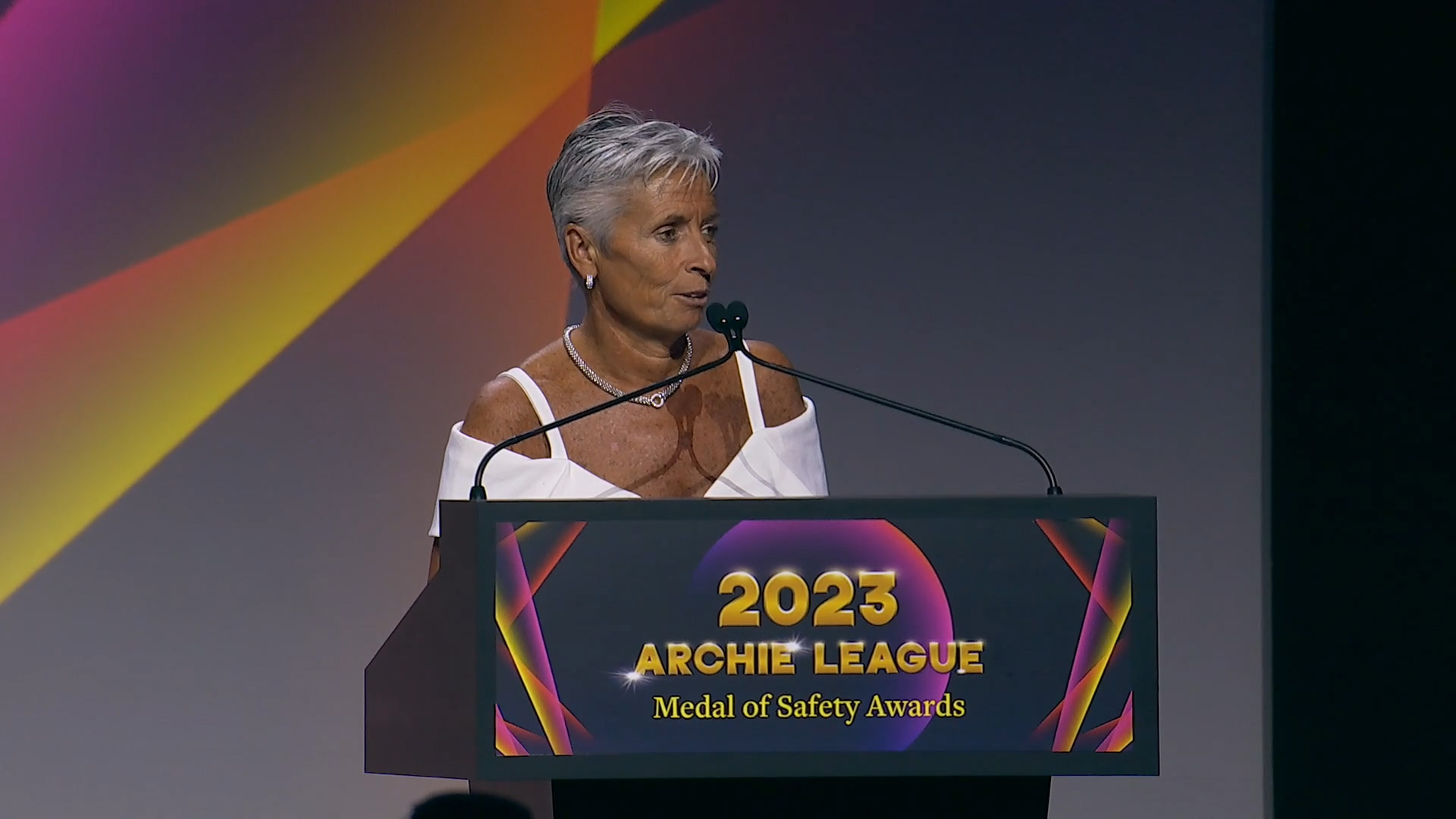

‘The blink-and-you'll-miss-it moment’
Controllers Natalie Glore and Nichole Larsen were on duty at Seattle-Tacoma International Airport in the predawn hours of October 18, when an inbound flight declared an emergency. The fire crews were in the middle of a shift change, and the airport was already busy at 6:30 a.m.
Glore, controlling ground traffic, and Larsen, coordinating arrivals and departures, worked together to get the fire crews across active runways and into position. An errant emergency vehicle became separated from the rest of its unit, and Glore noticed it was heading toward a runway on which Larsen had just cleared a departure. Alerted by Glore, Larsen canceled the takeoff clearance and directed the flight to exit the runway, noting the paramedic vehicle appeared disoriented. Working together, the controllers managed to deconflict air and ground traffic before the automated runway incursion alerting system was triggered.
NATCA Northwest Mountain Region Vice President Alex Navarro described it as "the blink-and-you'll-miss-it moment…in that moment, catastrophe was averted. One single remark was the difference."
A similarly fleeting glance separated disaster from a nonevent when New York Center controller Kamil Kulakowski was working a high-altitude sector on March 2 that includes a busy crossroads, where two airliners approached from opposite directions. At the fix, one of the two aircraft turned away from its filed route, and headed straight toward a collision. Kulakowksi, recognizing the danger, turned the other aircraft, and the crew responded quickly.
They soon learned the errant aircraft was following its clearance as they understood it, but not the flight plan in the system.
“Due to Kamil Kulakowski’s quick actions and no hesitation, the aircraft continued [on to] their destinations safely,” controller in charge Mike Cseri said at the time, according to NATCA’s account of the incident posted online.
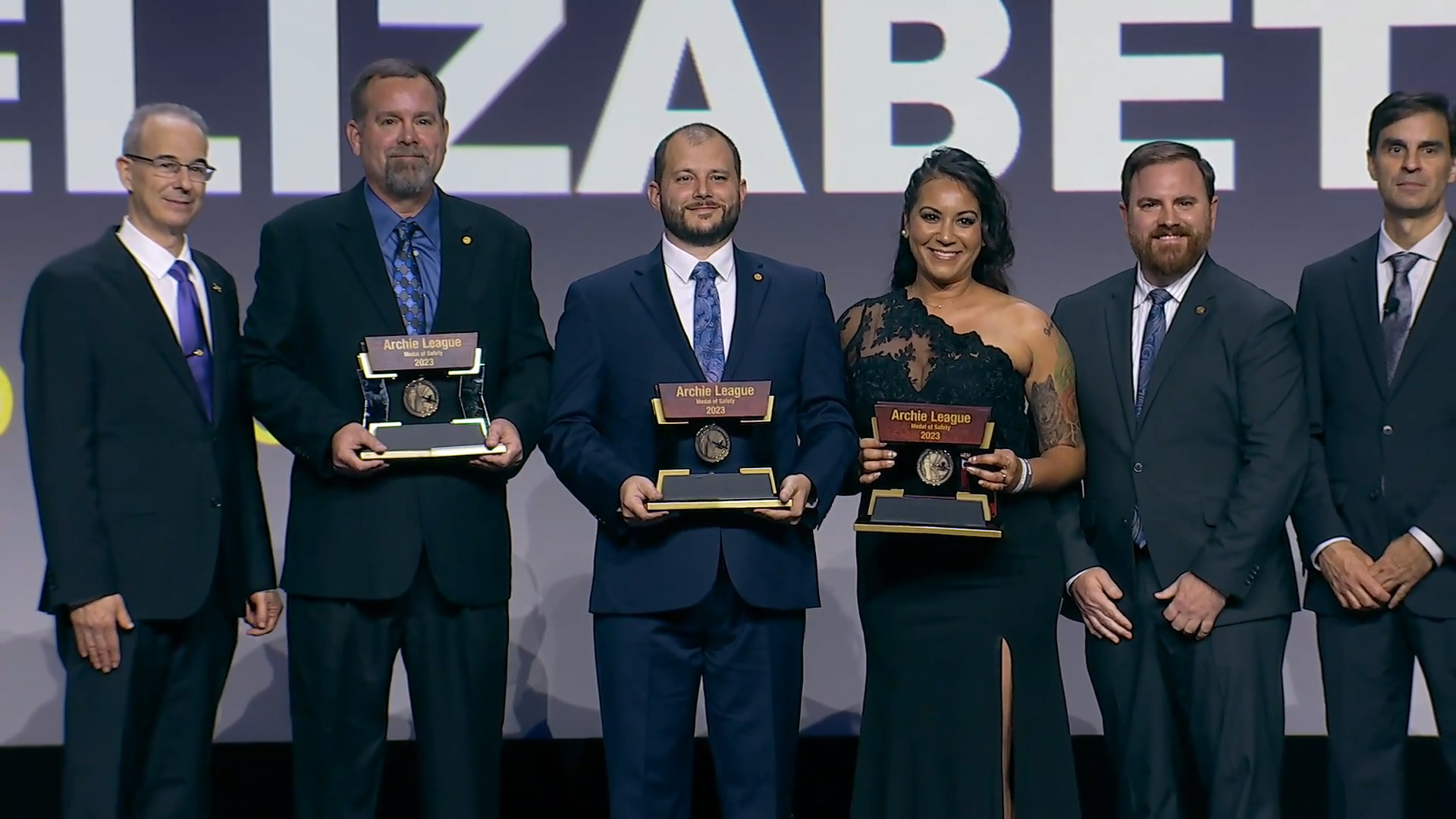
NATCA 2023 Archie League Medal of Safety honorees
Alaskan Region: Joseph “WW” Howard, Anchorage Tracon (A11)
Central Region: Daniel Clifton, Kansas City International Airport tower (MCI); John “Casey” Hovis, St. Louis Tracon (formerly MCI); Tyler Wilke, MCI; Matt Williams, MCI
Eastern Region: Kamil Kulakowski, New York Center (ZNY)
Great Lakes Region: JJ Lytton, Indianapolis Center (ZID)
New England Region: Charles “Chuck” J. Lumia Jr., formerly at Bradley International Airport (BDL), now at Yankee Tracon (Y90); Jeremy R. Wilson, Y90
Northwest Mountain Region: Natalie Glore and Nichole Larsen, Seattle-Tacoma International Airport tower
Southern Region: Chip Flores, Treasure Coast International Airport tower (FPR); Robert S. Morgan Jr., Palm Beach International Airport tower (PBI)
Southwest Region: Les Carroll and Erik Johnson, William P. Hobby Airport tower (HOU), and Jasmine Elizabeth Scott, formerly of HOU, now at George Bush Intercontinental/Houston Airport tower (IAH)
Western Pacific Region: Max Miggo and Benjamin K. Yuen, Oakland Center (ZOA)




